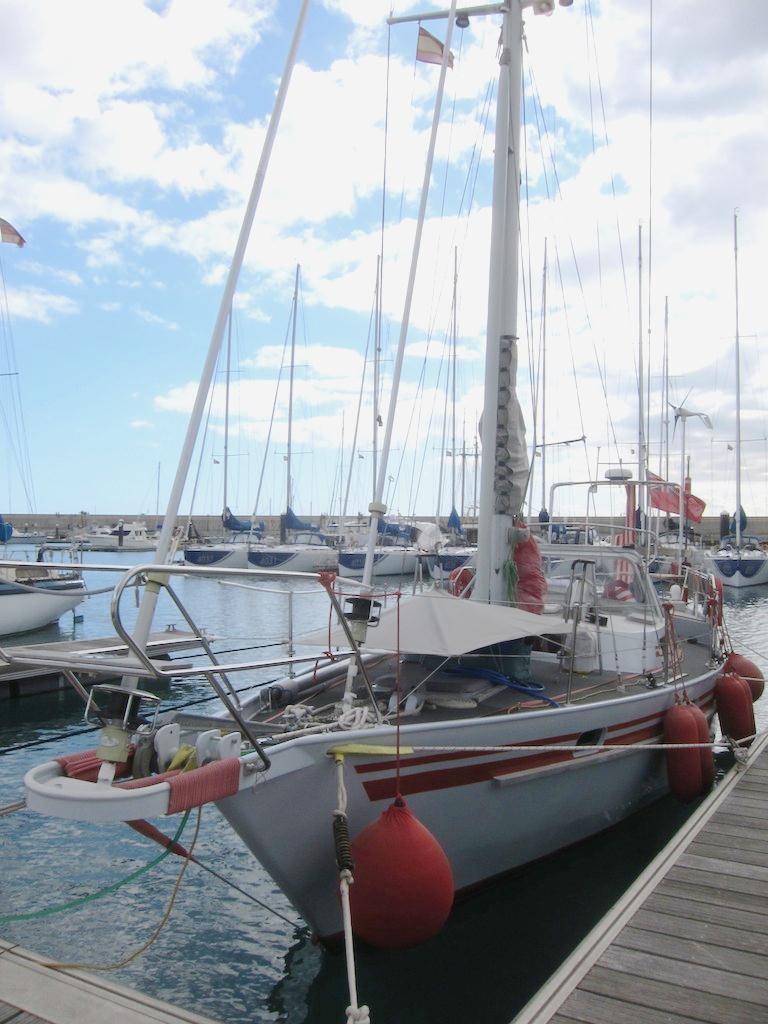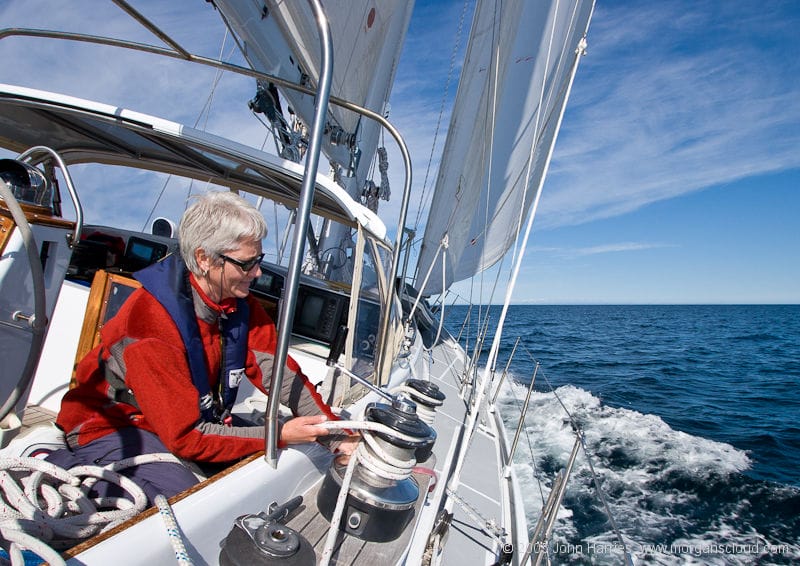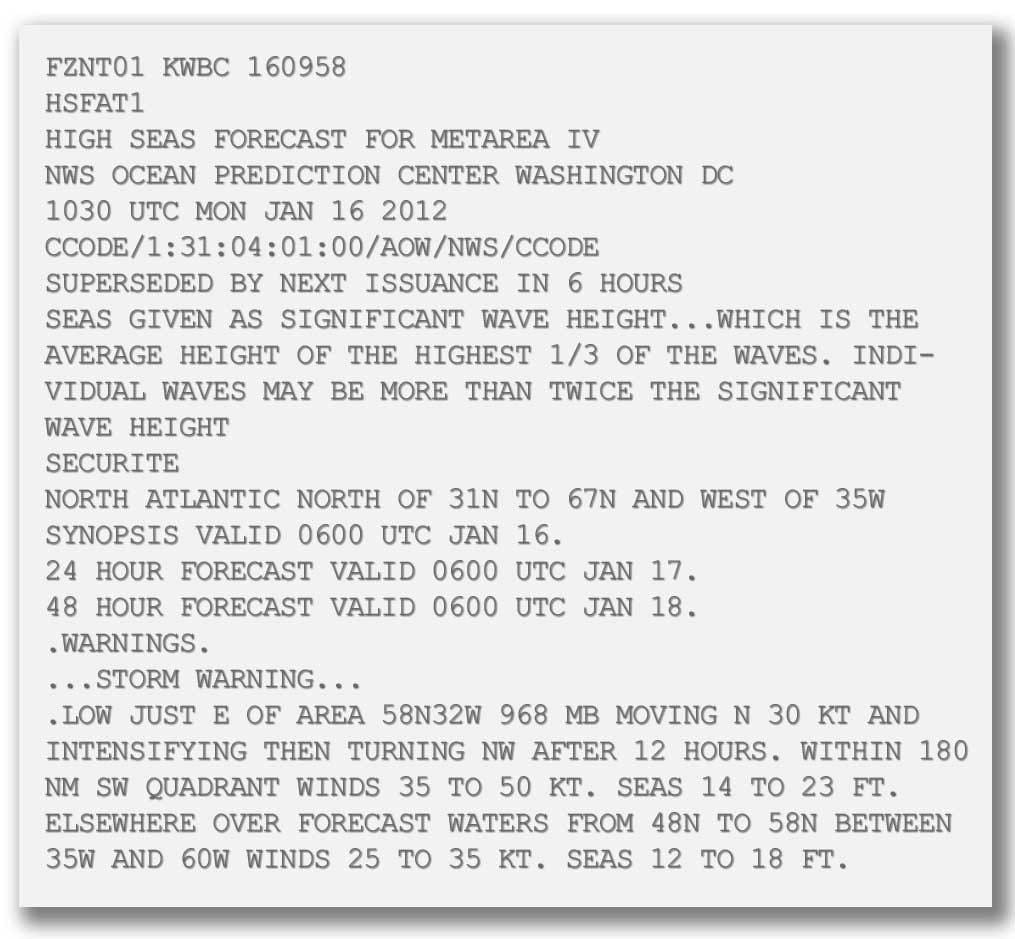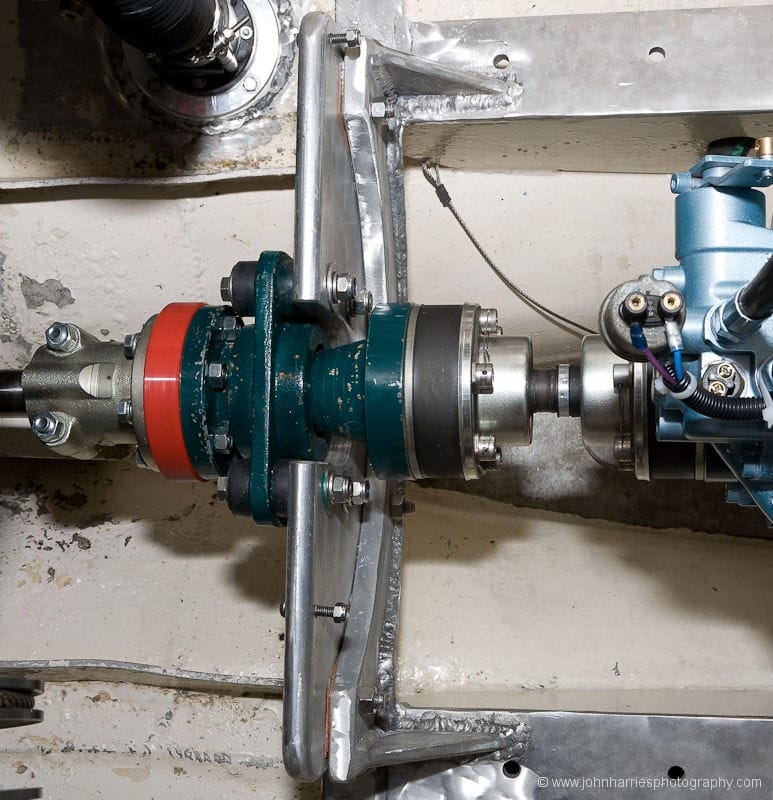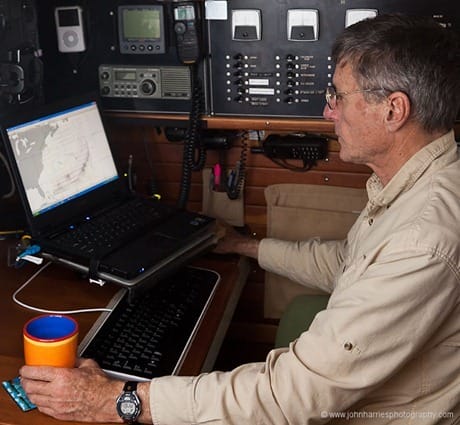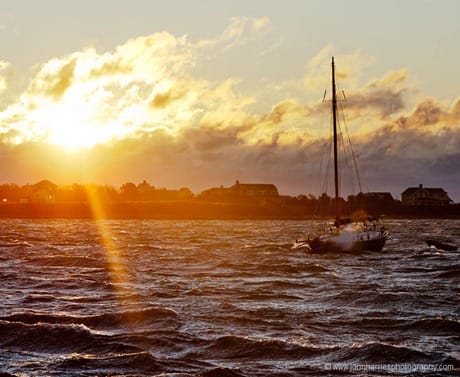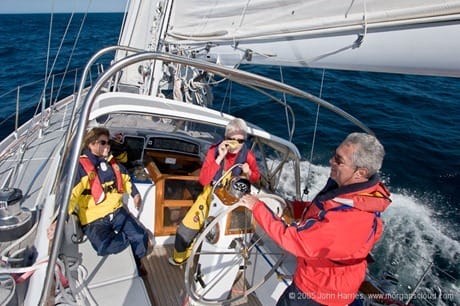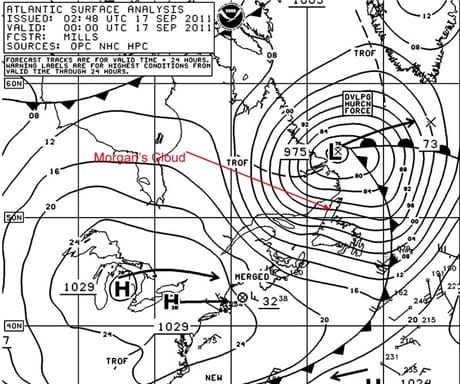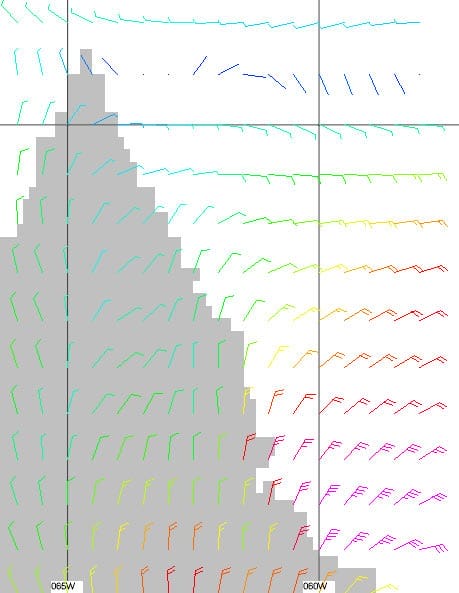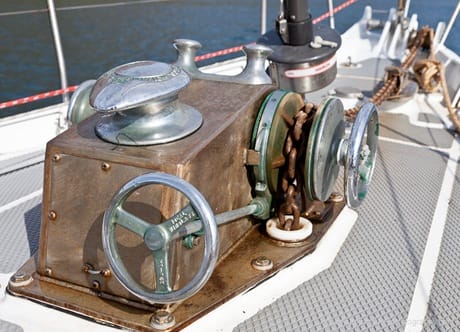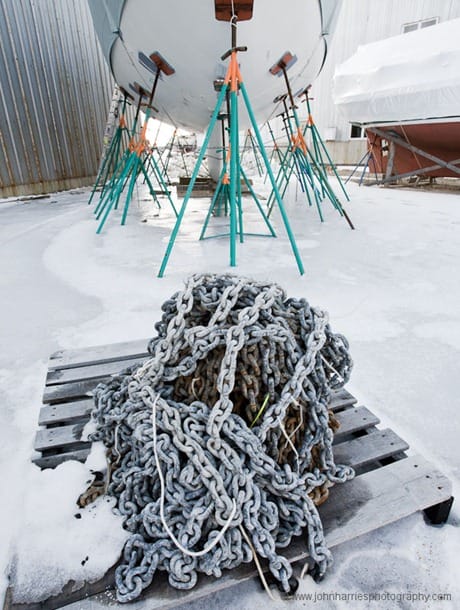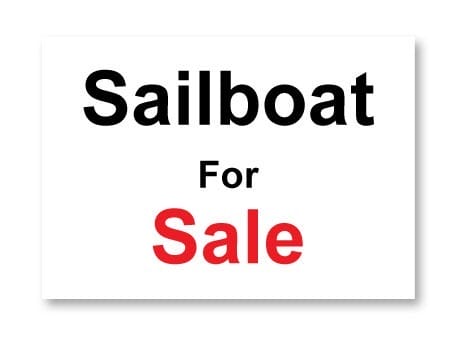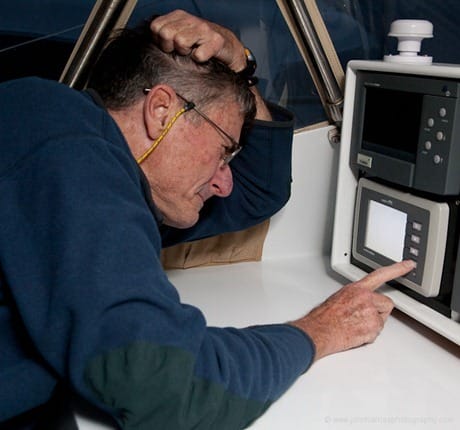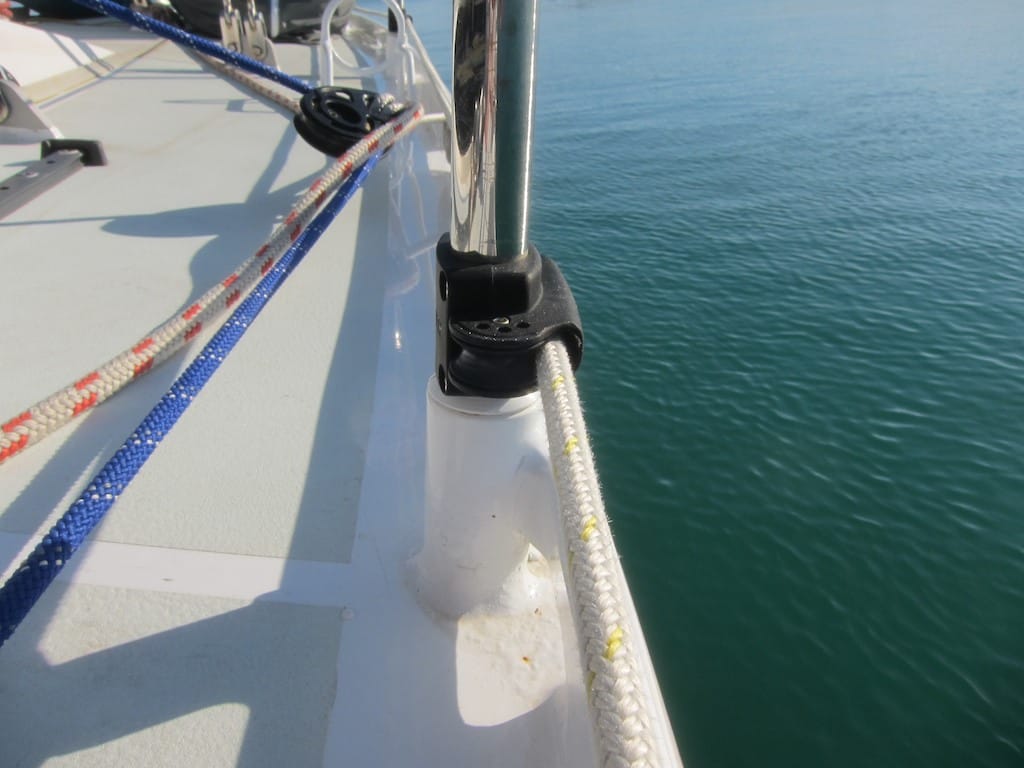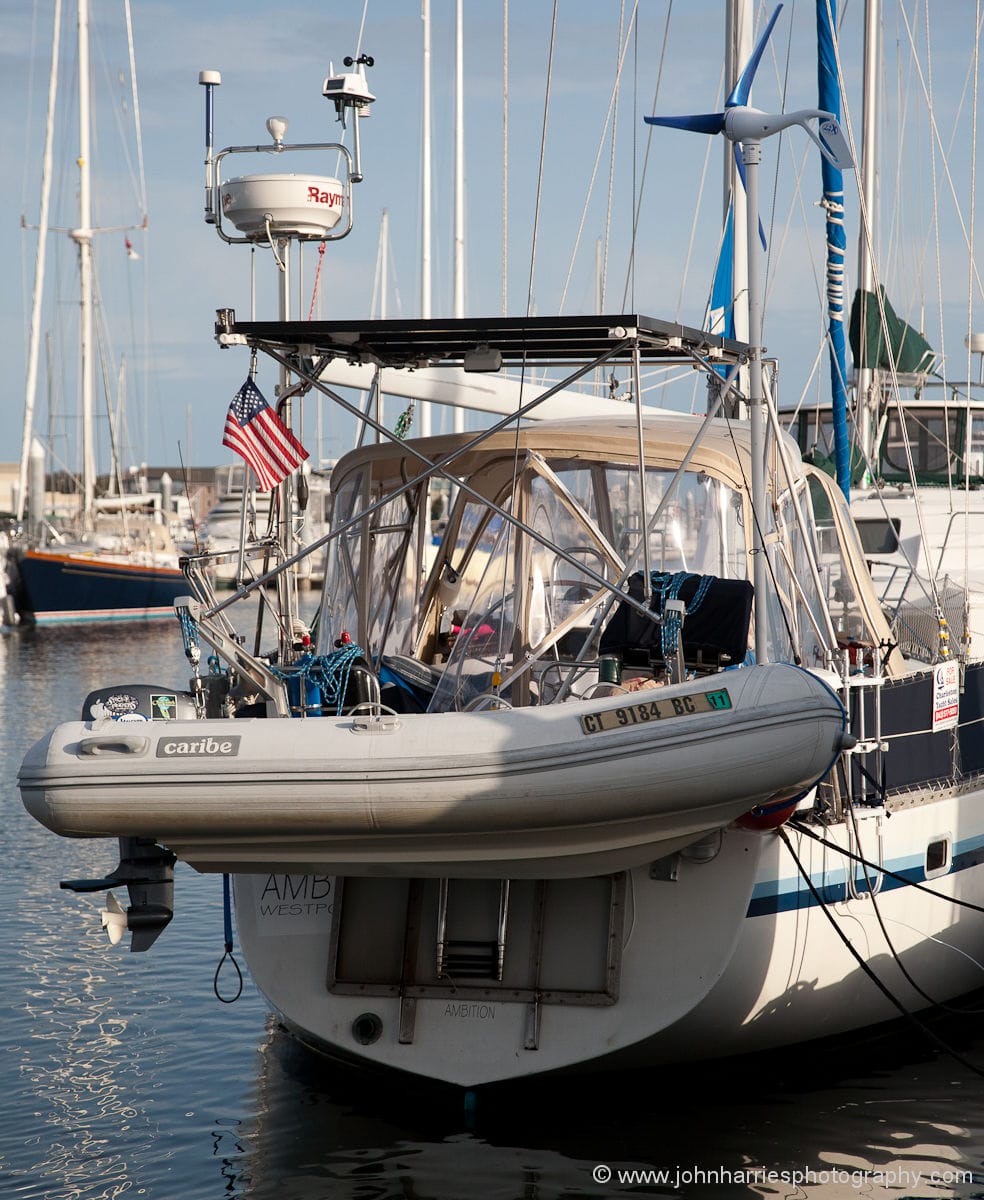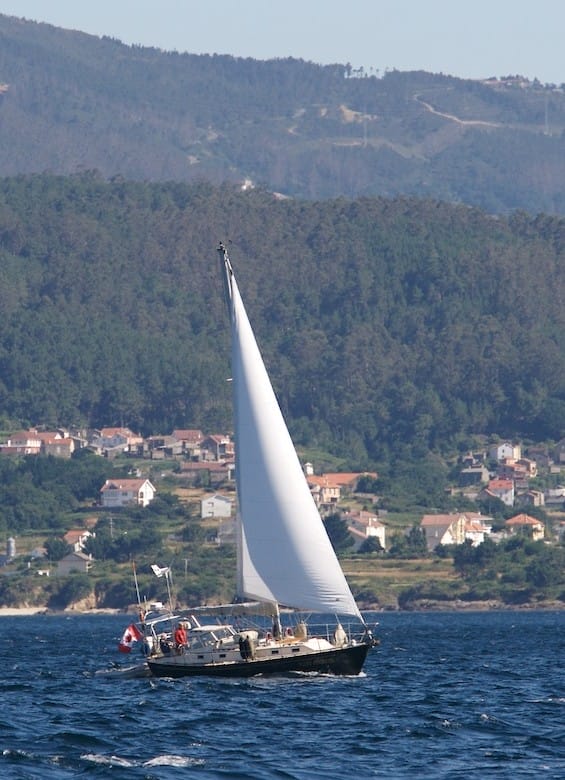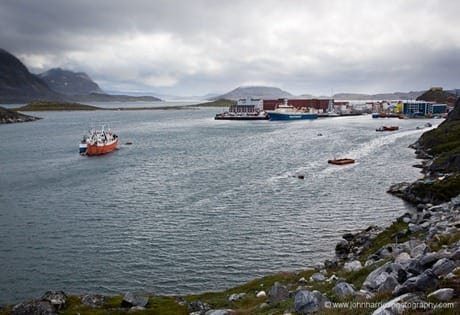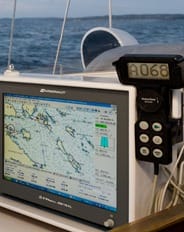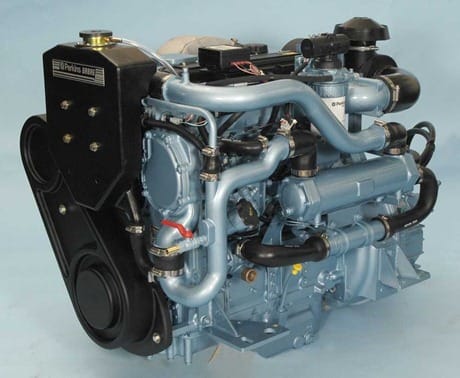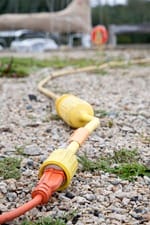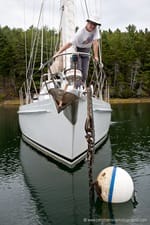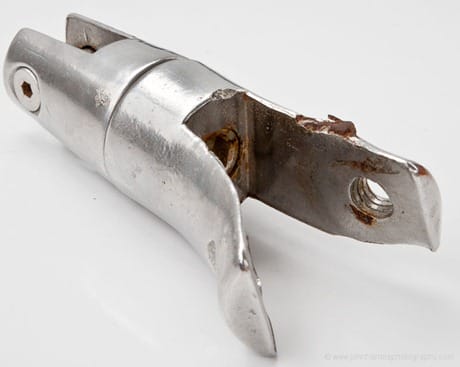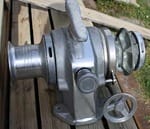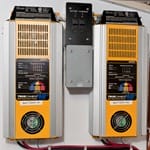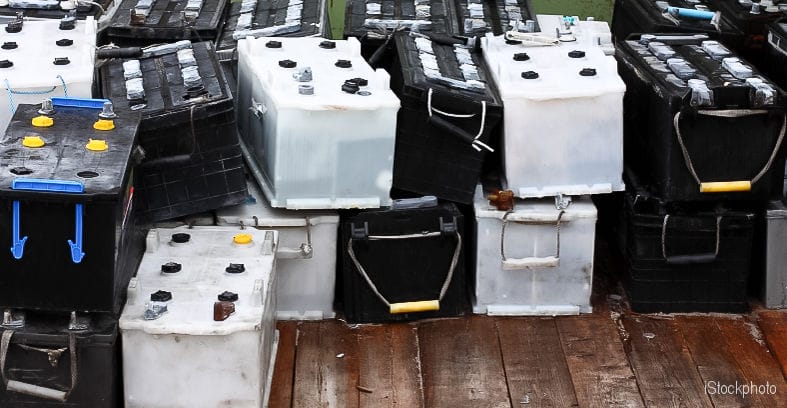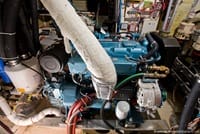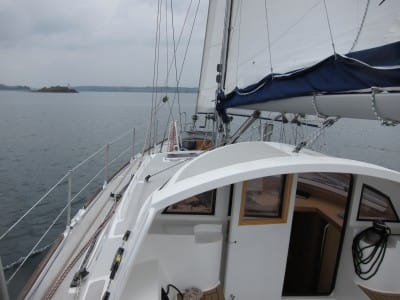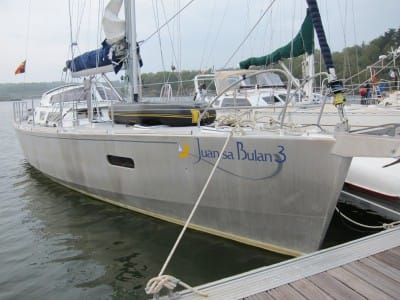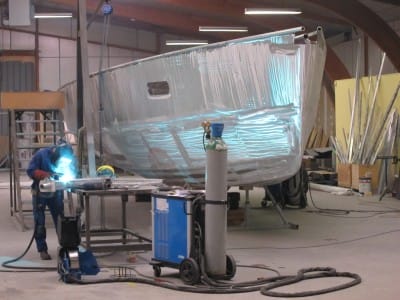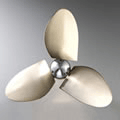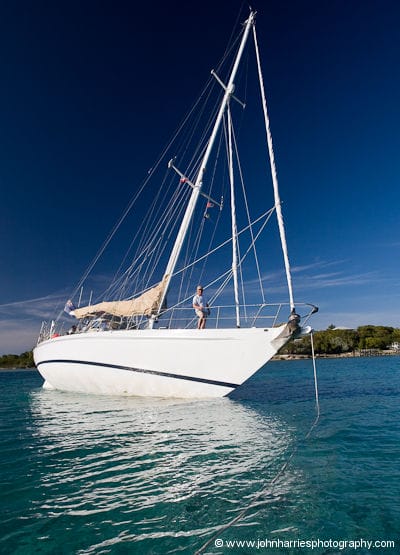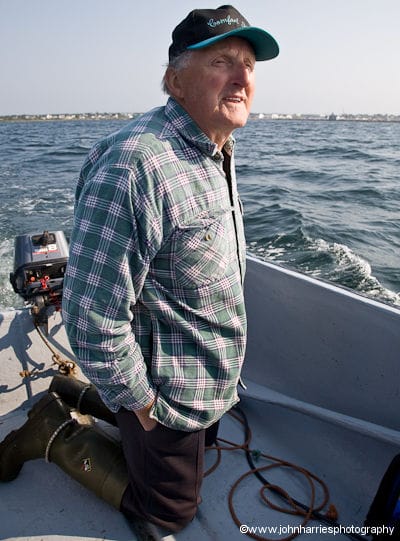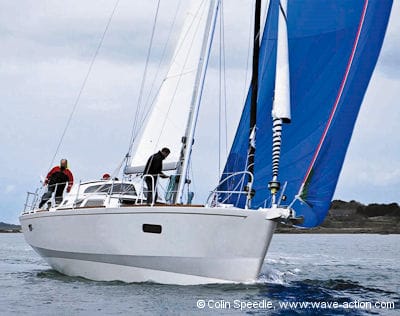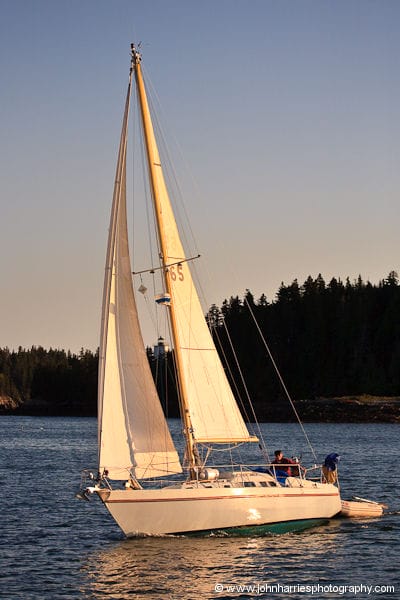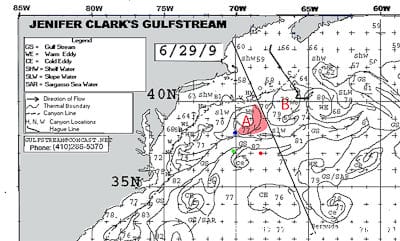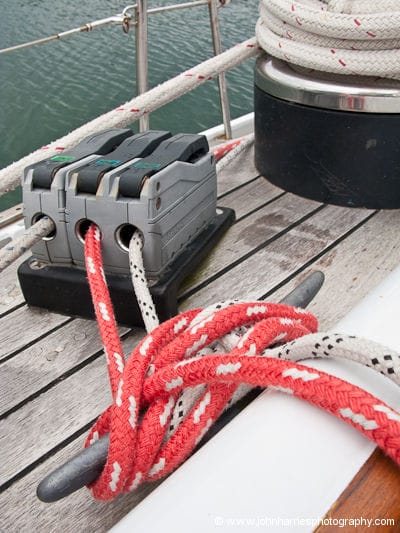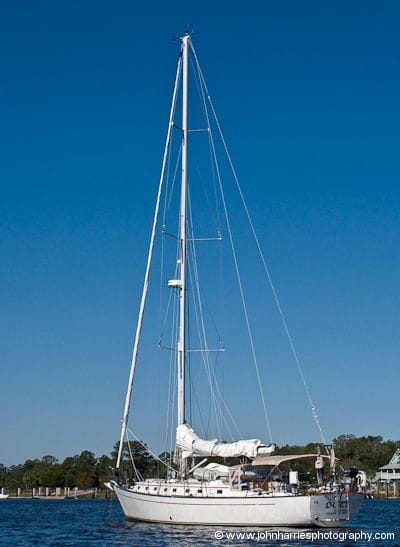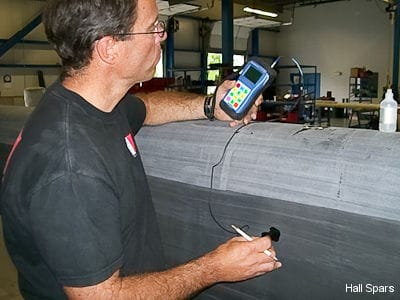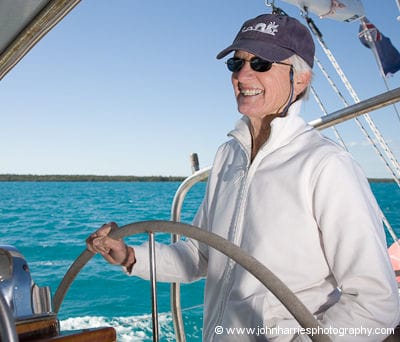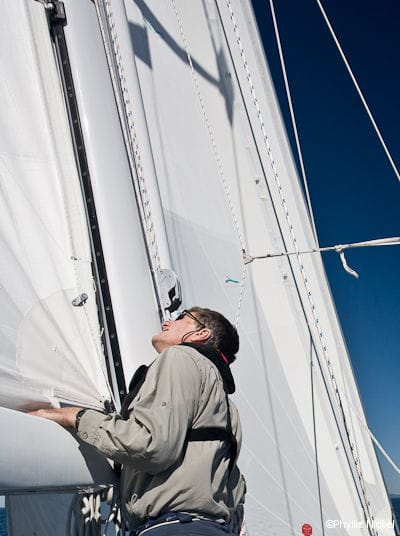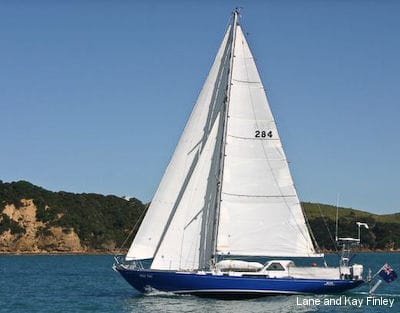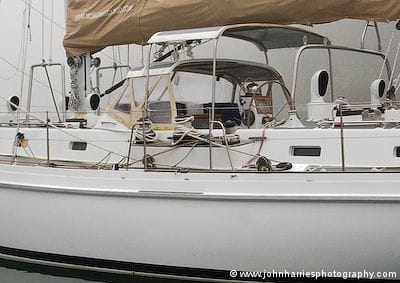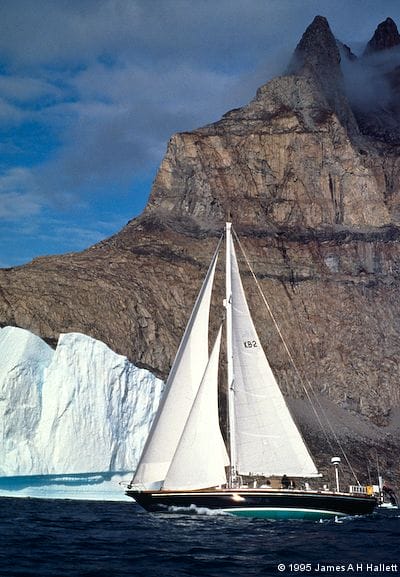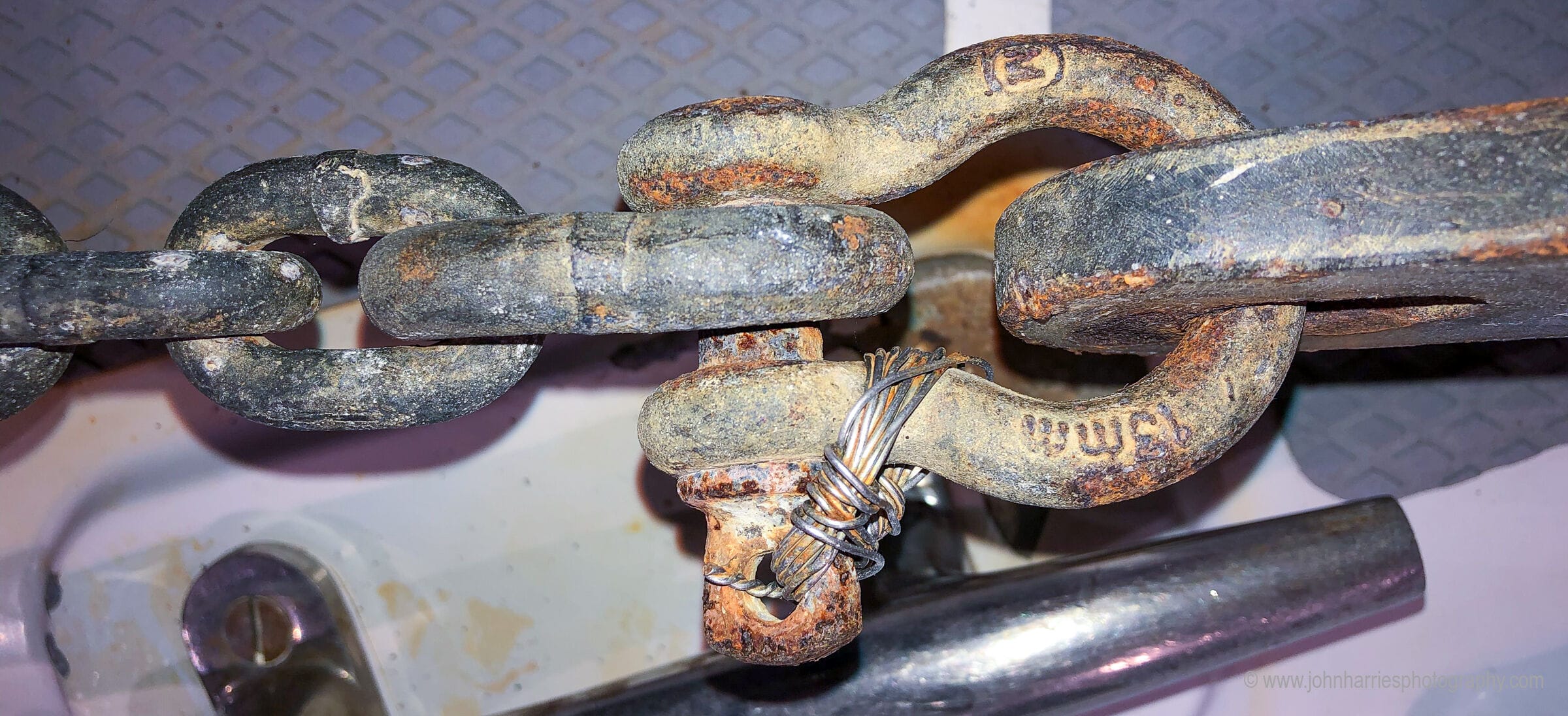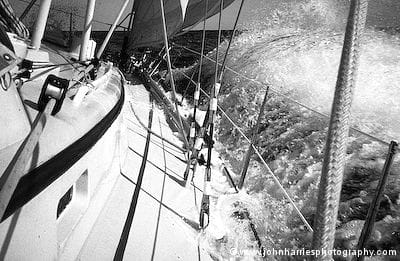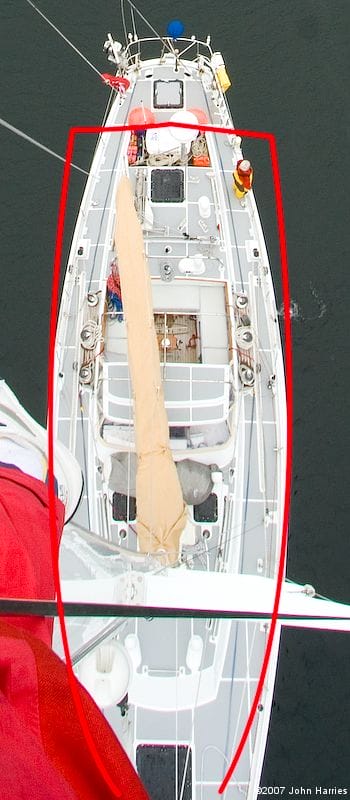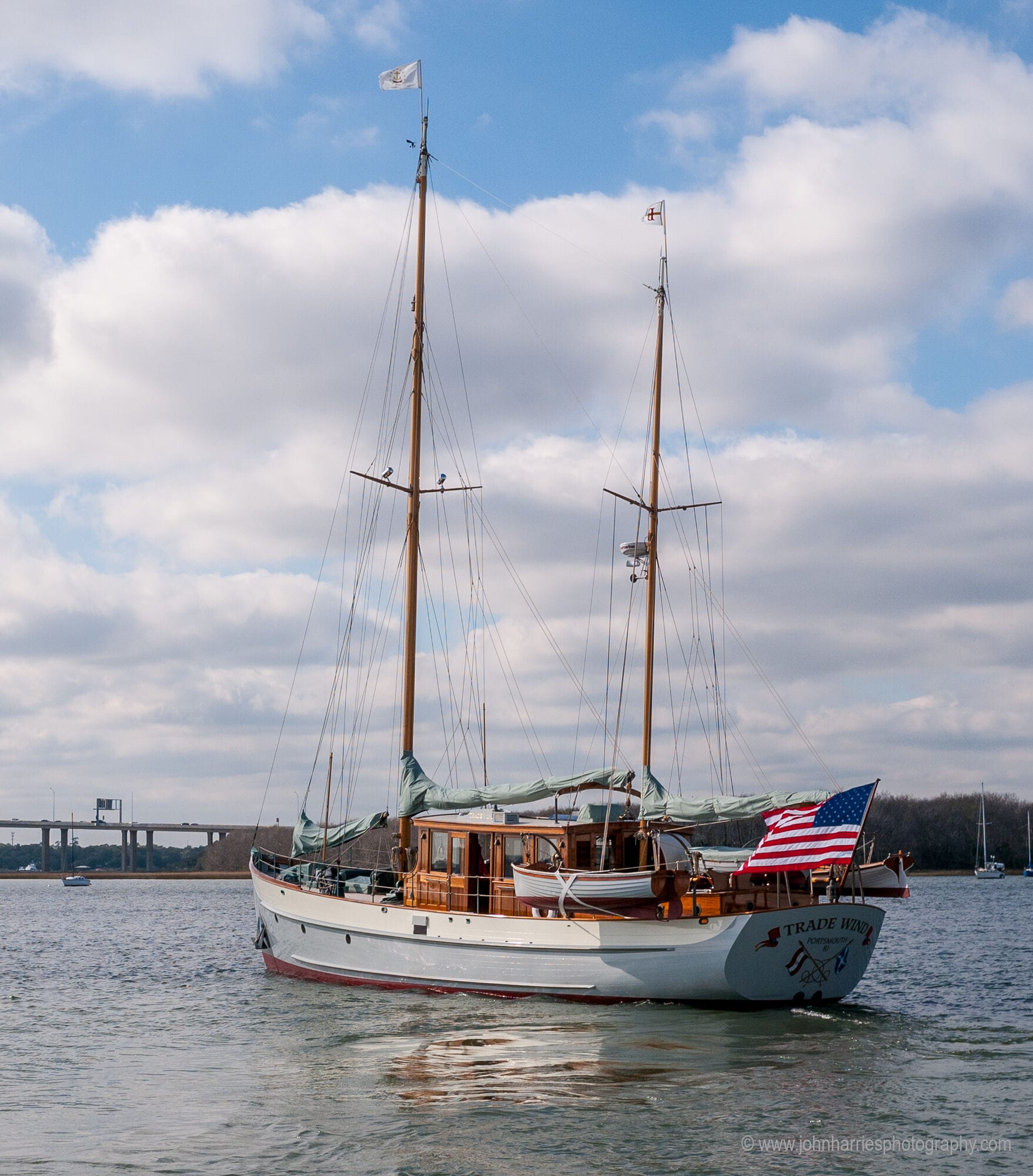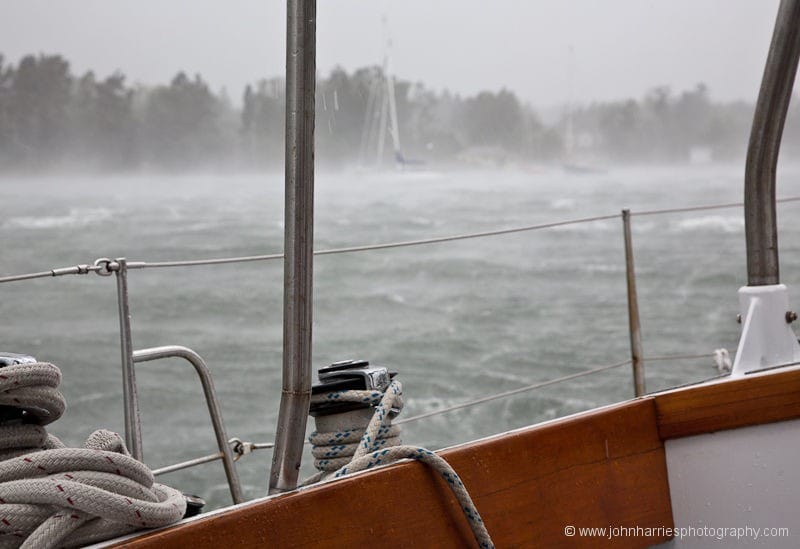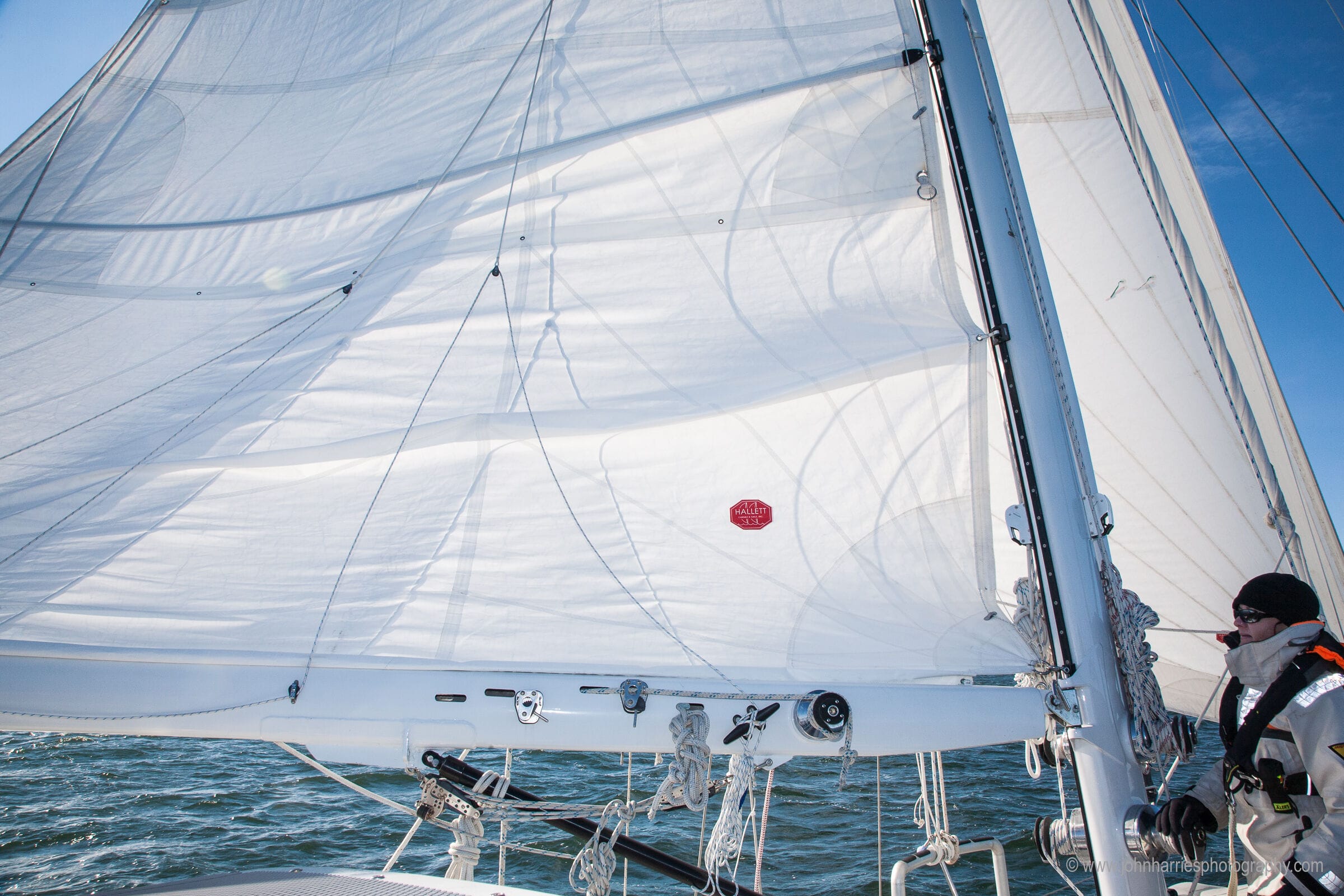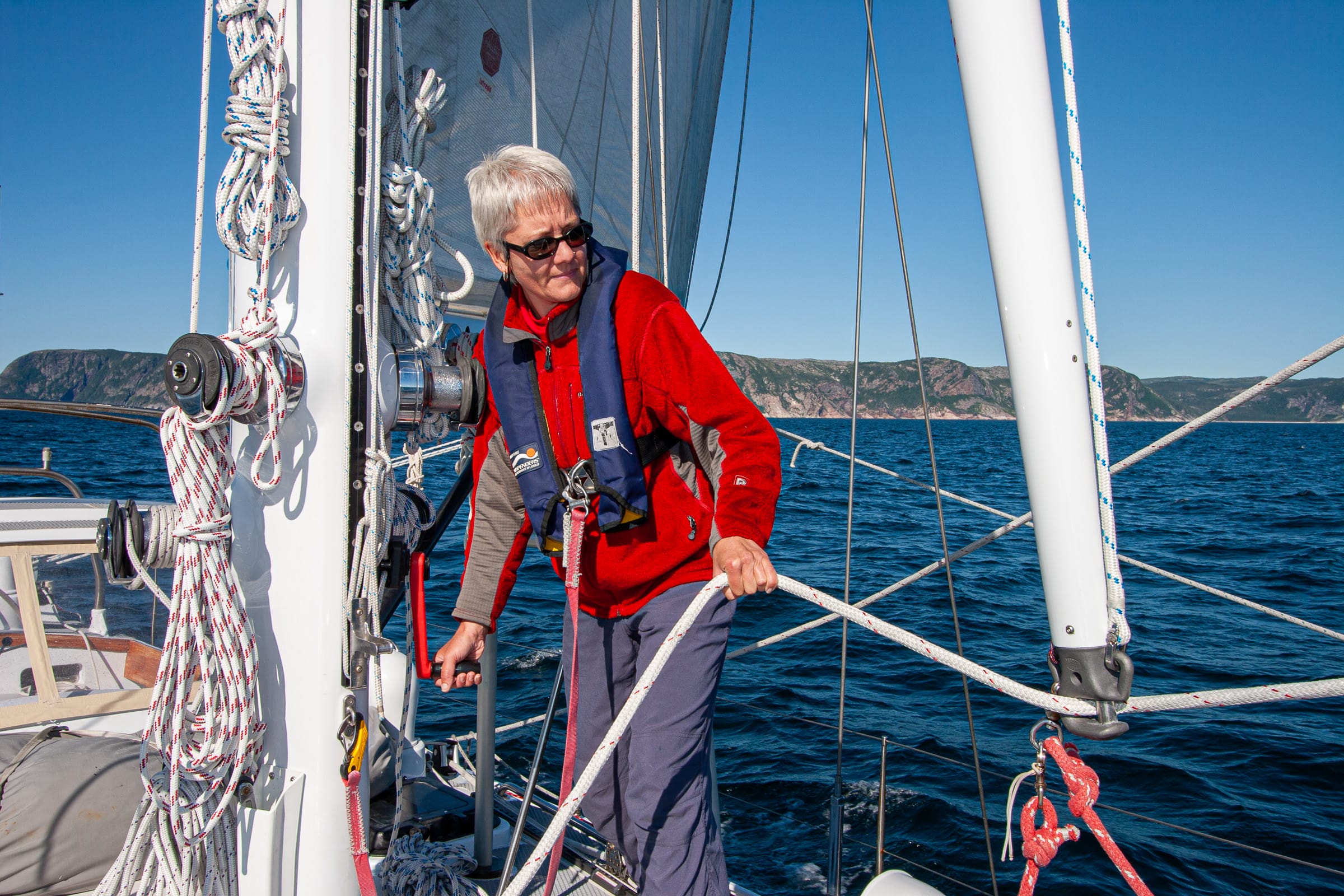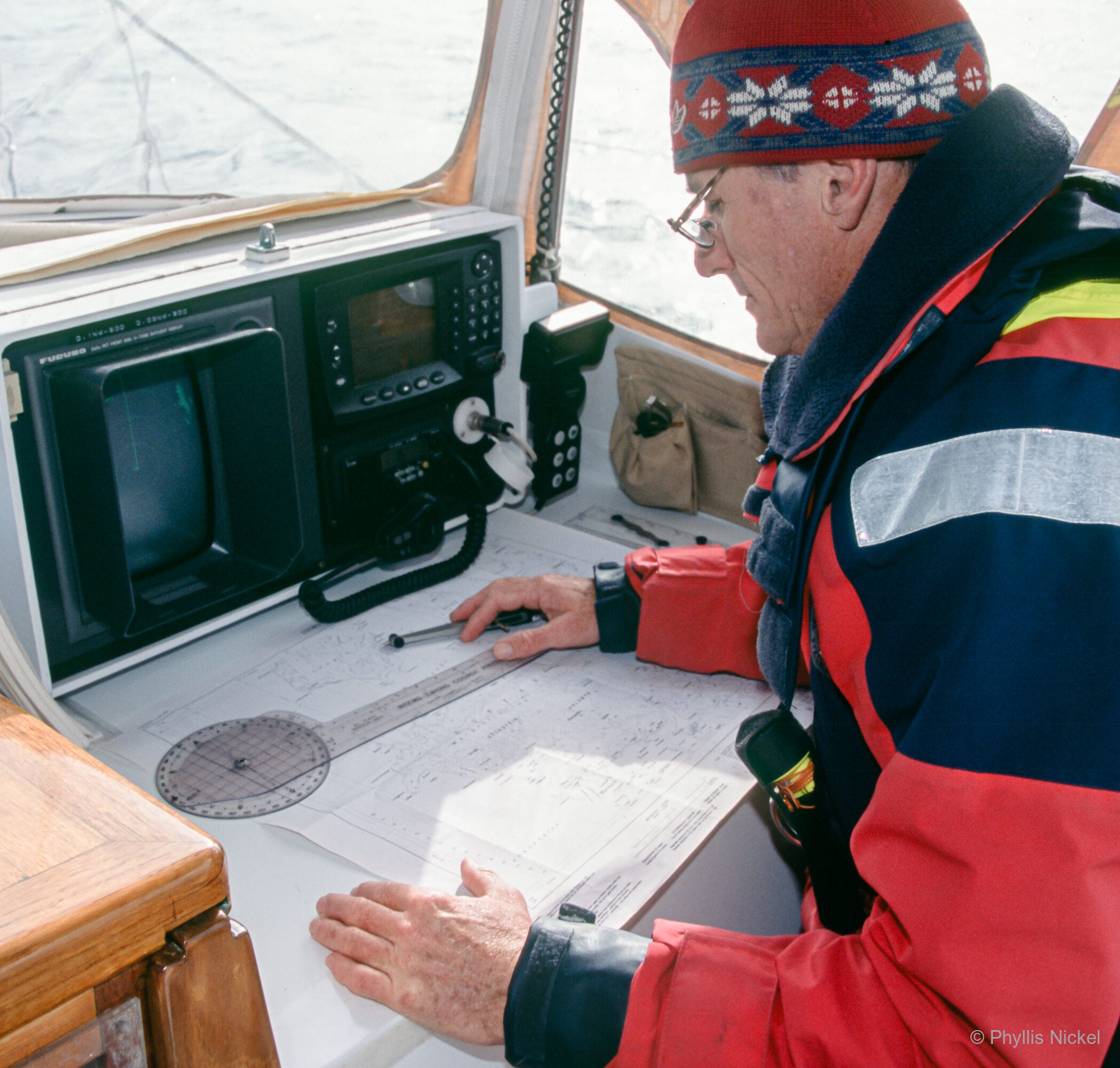MEMBERS
Click for TOC or scroll down for details
Articles in this topic:
- SailForce—A Better Electric Winch
- Five Tips To Get Ready For Happy Cruising
- Yet More Maintenance Tips
- Can We Make a $30,000 Cruiser Offshore Ready?
- Orca Navigation System Review, Part 3—Core Capabilities and Uses
- Orca Navigation System Review, Part 2—Core Installation and Setup
- Orca Navigation System Review, Part 1—Architecture and Display
- Victron AGM Super Cycle Battery Review
- Choosing The Right Alternator, Part 2—Other Criteria
- Choosing The Right Alternator, Part 1—Efficiency
- Forgiveness, The Forgotten Selection Factor
- Making Large Alternators Safer With Whitespace Programming
- 18 Tips To Install A Cruiser’s Alternator
- Efficient Generator-Based Electrical Systems For Yachts
- Right Sizing an Alternator
- Multihull and Monohull Storm Tactics Compared
- Catamaran, Trimaran, or Monohull—Capsize Risk
- Jackline Usage Thoughts
- Catamaran, Trimaran, or Monohull—Motion Comfort
- Limiting COB Drag Risk On A Smaller Boat
- Sail Buying Tips
- Radar Collision Avoidance, Part 2—Turning Plotting Into Action
- Flawed Jackline Systems Revisited
- Radar Collision Avoidance, Part 1—Plotting
- TeamO Backtow Lifejacket/Harness Review
- 20 Practical Tips For Better Watchkeeping
- Reefing Tips
- 6 Tips For Mindful Watchkeeping
- How Many Reefs and How Deep?
- The Risks Of Sidedeck Jacklines Quantified
- 11 Tips For A Good Watch System
- Building a Robust and Practical Hard Dodger
- Tether Tension On A Dragging Crew Overboard
- 8 Offshore Cruising Boat & Gear Evaluation Tips
- Rigging Tips Part 2
- Spinlock Deckvest 6D Review
- Safe and Easy Offshore Sailing—When to Reef, Part 2
- Electrical Tips
- Why We Don’t Recommend Boom Brakes
- Safe and Easy Offshore Sailing—When to Reef, Part 1
- Building A Safer Boom Preventer, Part 3—The Details
- A Small-Boat Anchoring System
- When Is A Cruising Sailboat Too Big?
- Is Your Engine Properly Fused?
- Better Jacklines
- Building A Safer Boom Preventer, Part 2—Line and Gear Strength Calculator
- Building A Safer Boom Preventer, Part 1—Forces and Angles
- Surviving Storms While Coastal Cruising—21 Preparation Tips
- Rebuilding a Cobra Yacht Steering System—Reassembly
- Surviving Storms While Coastal Cruising—9 Tips for Anchorage and Harbour Selection
- Rebuilding a Cobra Yacht Steering System—Disassembly and Inspection
- Surviving Storms While Coastal Cruising—12 Strategy Tips
- 10 Reasons Why Hybrid Lithium Lead-Acid Systems are a Bad Idea
- Converting a Racing Sailboat to a Fast Cruiser—Performance and Rig
- Hurricane Mooring Weight Recommendation
- Lithium Buyer’s Guide—Budget: Economy Options
- Applying Power and Torque
- Hurricane Mooring Pennant Photo Article
- Understanding Power and Torque
- Lithium Buyer’s Guide—Budget: High End System
- Close to Home, Yet Far Away
- Wakespeed WS500 Compared To ARCO Zeus—What Matters
- 63 Cruising Boat Maintenance Tips
- Adventure 40 Electrical System—Part 1, Voltage and Batteries
- Deck Hardware Mounting Photo Essay
- Lithium Battery Buyer’s Guide—Fusing
- The Rolling Refit Continues
- Lithium Batteries Buyer’s Guide—Current (Amps) Requirements and Optimal Voltage
- The Zen of Sail Covers
- Lithium Batteries Buyer’s Guide—Balancing and Monitoring
- Selecting The Right Hull Form
- Lithium Batteries Buyer’s Guide—BMS Requirements
- Why We Have an eWincher on a Small Boat
- Electronic Chart Dangers
- Review of Ocean Signal PLB3 Against MOB1
- Weather Analysis—Part 2, Strategic
- Weather Analysis—Part 1, Tactical
- Yes, You Can Have an Offshore Sailboat For Less Than $US100,000
- Spade Anchor Failure, Update and Summary
- Weather Analysis—Hardware and Software
- Bilge Alarms And Monitoring
- Bent Spade Anchor Analysis
- 9 Tips to Assess Weather Forecast Accuracy
- Easily Driven Boats Are Better
- Sailing a New-To-Us Boat Home—What Could Go Wrong?
- Replacing Diesel-Generated Electricity With Renewables, Part 2—Case Studies
- Replacing Diesel-Generated Electricity With Renewables, Part 1—Loads and Options
- How Weight Affects Boat Performance and Motion Comfort
- Adventure 40 Cockpit 2.0
- Falmouth For Orders
- Watt & Sea Hydrogenerator Buyer’s Guide—Cost Performance
- To Sea At Last
- 11 Tips To Save Your Engine From Overheating
- Safety Inspection and Gear For a New-To-Us Boat
- Fire Extinguishers We Have Bought and Stuff We Learned
- Liferafts For Cruisers—Positioning and Mounting
- Starting With The Basics On A New-To-Us Cruising Boat
- Going Up The Mast—More Improvements
- Liferafts For Cruisers—40 Years of Real-World Experience
- Nine Autopilot Usage Tips and Hacks
- Liferafts For Cruisers—Purchase Criteria
- How To Tune An Autopilot To Steer Better—Part 2
- Finding and Buying a Dream
- Adventure 40 Deck-2.0
- How To Tune an Autopilot to Steer Better—Part 1
- Autopilot Buyer’s Guide
- Storm Strategy—Fore-Reaching
- Colin and Louise Have a New Boat
- Eight Steps to Get Ready For Lithium Batteries
- Q and A—Trucking a Boat
- A Real World Tested Tool Kit For Cruisers
- Five Boat Lift Usage Tips
- Adventure 40 Reveal—Salon and Forward Cabin
- Balancing Battery Bank and Solar Array Size
- Going Up The Mast at Sea
- Adventure 40 Reveal—Galley, Head, and Aft Storage
- Gear Leveling and Mounting Hack
- Going Up The Mast—Four Dangerous But Common Mistakes
- How To Do Amateur Engineering¹
- Going Up The Mast—Our System
- Going Up The Mast—Fundamentals
- Adventure 40 Reveal—On Deck
- Going Up the Mast—An Industrial Fall Prevention Approach
- Adventure 40 Reveal—Hull, Cockpit, and Rig
- In-Mast, In-Boom, or Slab Reefing —Performance, Cost and Safety
- In-Mast, In-Boom, or Slab Reefing—Convenience and Reliability
- Cross-Bank Battery Charging—DC/DC Chargers
- Cross-Bank Battery Charging—Splitters and Relays
- Battery Bank Separation and Cross-Charging Best Practices
- How Hard Can We Charge Our Lead-Acid Batteries?
- Choosing & Installing Battery Switches
- Battery Containment—Part 1
- 5 Safety Tips For Working on Boat DC Electrical Systems
- Building a Seamanlike Lithium Battery System
- Two More Shore Power Safety Upgrades
- 9 Tips To Select Seamanlike Gear
- Download Cruising Sailboat Rig Checklist
- When Stuff Goes Wrong At Sea
- 8 Tips To Prevent Lithium Battery Black Outs
- Why Lithium Battery Load Dumps Matter
- Cruising Sailboat Roller Furler and Track Inspection
- Positioning of Wood Plugs For Seacocks
- The True Price of Autopilots & Vane Gears
- Cruising Sailboat Rig Wiring and Lighting Inspection
- 7 Checks To Stop Our DC Electrical System From Burning Our Boat
- 11 Self-Steering Vane Gear Installation and Usage Tips
- Why Most New-To-Us Boat Electrical Systems Must Be Rebuilt
- Cruising Sailboat Running Rigging Inspection
- 12 Cruising Boat Maintenance Tips
- Wakespeed WS500—Best Alternator Regulator for Lead Acid and Lithium Batteries
- Cruising Sailboat Standing Rigging Inspection
- Cruising Sailboat Spar Inspection
- Test Sail and Review of The Boréal 47.2
- Going Alongside (Docking)—12 More Tips and Tricks
- John Goes Sailboat Racing and Learns Stuff
- Protecting Our Boat’s Underwater Metals From Corrosion
- Going Alongside (Docking) in Current—Backing In
- Details Matter—Engine Failure at Sea
- Going Alongside (Docking) in Current—Turning in Confined Spaces
- Going Alongside (Docking) in Current—Fundamentals
- Helping a Member Choose an Anchor
- A Good First Aid Kit
- Why I Won’t Power Our Boat With a Portable Generator
- Setting and Striking a Spinnaker Made Easy and Safe
- Check Your Boat Shore Power System
- Our New Boat Selection Process—Fitness For Mission
- Cruiser’s Tool Kit—Wrenches
- 29 Tips To Get Insurance For Offshore Voyaging—Negotiating Cover
- 29 Tips To Get Insurance For Offshore Voyaging—Us and Our Boat
- Cruiser’s Power Tool Kit
- Leaving a Dock Against an Onshore Wind—Part 2
- Leaving a Dock Against an Onshore Wind—Part 1
- Getting Insurance For Offshore Voyaging—Understanding The Problem
- 14 Tips To Come Alongside Single-Handed—Part 2
- 14 Tips for Coming Alongside Single-handed—Part 1
- Integrating and Documenting NMEA 0183 and 2000 Networks
- Two More Anchor Selection Criteria
- Making Anchor Tests More Meaningful
- Choosing A Cruising Boat—Shade and Ventilation
- When Electric Drive Works For a Cruising Sailboat
- Roller Furling Headsail Risks and Rewards
- Choosing a Cruising Boat—Shelter
- Q&A—Sailboat Performance, When The Numbers Fail
- Offshore Sailboat Winches, Selection and Positioning
- Best Offshore Boat Cockpit Cushions
- Buying a Boat—A Different Way To Think About Price
- Safety: We Can’t Do Or Even Learn About It All
- Cockpits—Part 2, Visibility and Ergonomics
- Cooking Options For Live-aboard Voyagers—Part 2, Liquid Fuel
- Cooking Options For Live-aboard Voyagers—Part 1, Electric
- Cockpits—Part 1, Safe and Seamanlike
- Should Your Boat’s DC Electrical System Be 12 or 24 Volt?—Part 2
- Should Your Boat’s DC Electrical System Be 12 or 24 Volt?—Part 1
- Topping Lift Tips and a Hack
- The Danger of Voltage Drops From High Current (Amp) Loads
- Rigid Vangs
- Maretron—Better NMEA 2000 Cabling
- Is Induction Cooking For Boats Practical?
- eWincher Electric Winch Handle Review—Part 3, Reliability and Summary
- eWincher Electric Winch Handle Review—Part 2, The Competition
- eWincher Electric Winch Handle Review—Part 1, Our Testing
- Second Level Thinking About Offshore Voyaging Boats
- Sailboat Deck Layouts
- US$30,000 Starter Cruiser—Part 2, The Boat We Bought
- US$30,000 Starter Cruiser—Part 1, How We Shopped For Our First Cruising Sailboat
- Washing Machines: Complexity and Space Considerations
- Planning a Refit— Keel Removal and Inspection
- Q&A Backing Out of a Bow-In Med Moor
- Two New Designs From Boréal
- Stupid Alternator Regulators Get Smarter…Finally
- Sail Area: Overlap, Multihulls, And Racing Rules
- Torquing Keel Bolts
- Refits—The Radical Option
- Non-Destructive Testing of Keel Bolts
- Cruising Rigs—Sloop, Cutter, or Solent?
- Offshore Sailboat Keel Types
- Outbound 46 Review—Part 2, Keel, Rudder, Bow Thruster, and Construction
- Planning and Budgeting an Engine Rebuild or Replacement
- Outbound 46 Review—Part 1, Hull Form
- Planning a Refit—Upfront Costs
- ShoreFasts—Part 3, The Gear
- ShoreFasts—Part 2, Example Setups Plus Tips and Tricks
- ShoreFasts—Part 1, When to Use Them
- Planning a Refit—Rudders, Repair or Replacement
- Planning a Refit—The Problem With Rudders
- Yawing at Anchor, The Theory and The Solution
- Planning a Refit—Boat Parameters
- Retrieval of Dyneema (Spectra) Series Drogues Solved
- Planning a Refit—It’s a Lot About You
- Anchoring—Chain: Stoppers, Termination and Marking
- A Sail Away Offshore Cruising Boat For Less Than US$100,000—Best Hull Material
- Anchoring—Kellets
- A Sail Away Offshore Cruising Boat For Less Than US$100,000—Rudders and Keels
- A Sail Away Offshore Cruising Boat For Less Than US$100,000—Decks, Hulls and SS Fittings
- Anchoring—Snubbers
- A Sail Away Offshore Cruising Boat For Less Than US$100,000—Introduction
- Four Hand Tools I Should Have Bought Years Ago
- The Garcia Exploration 45 Compared to The Boréal 47—Part 5, Interior, Summary and Price
- The Garcia Exploration 45 Compared to The Boréal 47—Part 4, Inside Watch Stations
- Insanely Cool Anchorage Toys
- The Garcia Exploration 45 Compared to the Boréal 47—Part 3, Hull and Build
- Passage Anchorages
- The Garcia Exploration 45 Compared to the Boréal 47—Part 2, Deck and Cockpit
- The Garcia Exploration 45 Compared to the Boréal 47—Part 1, Introduction and Rig
- Ultra Anchor Review
- Which is Best For Navigation: Plotter, Computer or Tablet?
- Buying a Boat—Never Say Never
- New Satellite Communications Systems
- What We Need to Know About Moisture Meters and Wet Fibreglass Laminate
- Buying a Fibreglass Boat—Hiring a Surveyor and Managing the Survey
- A Useful, But Potentially Deadly, Feature of Navigation Apps and Plotters
- Buying a Cruising Boat—Five Tips for The Half-Assed Option
- 12 Electronic Navigation Tips From a Cruise on Someone Else’s Boat
- Coastal Passages, Part 5—On To The Finish
- You May Need a Bigger Boat Than You Think
- Costal Passages, Part 4—Keep On Plugging
- Six Things We Need to Check Before Survey
- Series Drogues: Learning From Randall Reeves
- Coastal Passages, Part 3—Off We Go
- Why Are Saildrives Even A Thing?
- Coastal Passages, Part 2—Rounding Headlands
- Six Things We Can Learn From A Night Approach That Ended on a Lee Shore
- Coastal Passages, Part 1—Making a Plan, 10 Tips
- Six Warnings About Buying Fibreglass Boats
- Rocna Resetting Failures and Evaluation of Vulcan and Mantus
- Learn From The Designers
- Refitting an Old Boat Can Work…For Some
- Specifying Primary Anchor Size
- SPADE, SARCA Excel, or Some Other Anchor?
- UV Protection For Roller Furling Sails
- Nigel Calder’s Integrel, Part 2—Is It Really Better Than a Generator?
- Nigel Calder’s Integrel, Part 1—What You Need To Know
- SARCA Excel Anchor—A Real World Test
- Cruising Boat Electrical System Design, Part 3—Specifying Optimal Battery Bank Size
- Cruising Boat Electrical System Design, Part 2—Thinking About Systems
- Cruising Boat Electrical System Design, Part 1—Loads and Conservation
- Alternatives to Chainplates For Drogue Attachment…Or Not
- Prioritizing The Right Things
- Ocean Passaging—Turning Back Is Hard To Do
- Anchor Chain Catenary, When it Matters and When it Doesn’t
- Which Old Salts Should We Listen To? 10 Ways To Decide—Part 2
- Colin on Anchoring
- Which Old Salts Should We Listen To? 10 Ways To Decide—Part 1
- Storm Survival FAQ
- AIS Crew Overboard Beacons—Setting Up The Boat Alarms Right
- Just Get a Series Drogue Designed By Don Jordan…Dammit!
- Amidships “Preventers”—A Bad Idea That Can Kill
- Rogue Waves Are Not Bad Luck
- 5 Ways We Are Updating Our Thinking On Fire Fighting
- Battery Monitors, Part 3—Calibration and Use
- Battery Monitors, Part 2—Recommended Unit
- Battery Monitors, Part 1—Which Type Is Right For You?
- Battle Testing a Jordan-Designed Series Drogue—Round 2
- Rigging Tips Part 1
- 10 Things That Are Common On Offshore Cruising Boats…But Shouldn’t Be
- Rig Tuning, Part 5—Sailing Tune
- Battery Bank Size and Generator Run Time, A Case Study
- Rig Tuning, Part 4—Mast Blocking, Stay Tension, and Spreaders
- Rig Tuning, Part 3—6 Steps to a Great Tune
- Rig Tuning, Part 2—Understanding Rake and Bend
- Rig Tuning, Part 1—Preparation
- Battery Options, Part 2—Lead Acid
- Two Dangerous Rigging Mistakes
- Boréal Yachts—Looking To The Future
- Boréal Yachts—Eight Years On
- 8 Things I Learned From a Lazy Man’s Galley Makeover
- Time to Stop Using And Selling Tethers with Gibb-style Hooks
- Crew Overboard Recovery—Our Replacement For Quick Stop
- Crew Overboard Recovery, Is The Quick Stop Bogus?
- Which Lifejacket Auto-Inflator Should We Select?
- Should We Wear Lifejackets or Harnesses, Both, Neither?
- Apps to Manage Boat Maintenance and Cruises
- Managing Boatyard Costs—Part 2
- Managing Boatyard Costs—Part 1
- Smartphone (CrewWatcher) or AIS-Based Crew Overboard Beacons?
- Severe Weather Probability Forecast Product
- Coming Alongside (Docking)—Backing In, Part 2
- Coming Alongside (Docking)—Backing In, Part 1
- Surviving The Boatyard—Part 2
- Surviving The Boatyard—Part 1
- Running Rigging Recommendations—Part 2
- Weather Routing In Action
- Running Rigging Recommendations—Part 1
- 29 Aluminum Boat Care Tips—Part 3
- Automated Weather Routing—Part 1, The Tools
- 29 Aluminum Boat Care Tips—Part 2
- Q&A, Coming Alongside (Docking) With Twin Rudders
- 29 Aluminum Boat Care Tips—Part 1
- Seven Skills We DON’T Need to Go Cruising
- The Golden Globe Race—The Boats and the Refits
- We Love The Way Our Anchor Drags
- Iridium GO! and UUPlus, Real World Use Review
- Watt & Sea Hydro Generator Review
- Can We Really Be Seen By Ships at Night?
- Crew Overboard Prevention—Use of Climbing Harnesses
- Coming Alongside (Docking)—Taming the Wind
- Coming Alongside (Docking)—The Final Approach
- Coming Alongside (Docking)—Manoeuvring in Close Quarters
- Battle Testing a Jordan-Designed Series Drogue—Round 1
- Get-Home Backup For Offshore Motorboats—Part 3, The Winner
- Get-Home Backup For Offshore Motorboats—Part 2, The Options
- Get-Home Backup for Offshore Motorboats—Part 1, Is It Even a Thing?
- Boat Heating—Part II
- Determining When Heaving-To Is Dangerous
- 10 Ways to Make Your Boat Easier to Bring Alongside a Dock
- Boat Heating—Part I
- Rigging The Spring That Makes Docking Easy, Or an Alternative
- Coming Alongside (Docking) in 4 Easy Steps
- Transitioning From Heaved-to To a Series Drogue
- Series Drogue Durability Problems
- The Right Tethers To Keep Us Aboard—Part 2, Construction and Hardware
- The Right Tethers To Keep Us Aboard—Part 1, A Mix
- 8 Radar Use Tips
- Three Tips to Make Your Cruising Boat Fault Tolerant
- 11 Tips for Safe Navigation With Phones and Tablets
- Navigation in Fog—Underway
- Navigation in Fog—Preparation
- Navigating in Fog—The Tools
- The Artnautica LRC 58 Adventure Edition Offshore Motorboat
- Thinking About Better Offshore Motorboats
- Jacklines: Materials, Fabrication and Installation
- The Unknown Unknowns
- An Easy Way to Avoid Engine Failures
- Designing For Dux Rope Rigging—A Paradigm Shift—Part 2
- Dynice Dux, Part 1: Practical Low-Stretch Rope Rigging For Offshore Sailboats
- What Marine Engine Duty Ratings Mean To You
- A Sailor’s Cockpit Enclosure—Part 2
- A Sailor’s Cockpit Enclosure—Part 1
- Keeping Things Tasty—Tips For Food Storage (With No Refrigeration) & Meal Preparation
- Keeping Things Tasty—A 36,000-Mile Lesson In Provisioning
- The Perfect Anchor Roller
- The Three Keys To Cruising Happiness
- Q&A—Are Battery Desulphators a Good Idea?
- Hoisting the Mainsail Made Easy—Simplicity in Action
- Ten Tips To Fix Weather Helm
- How Batteries Charge (Multiple Charging Sources Too)
- Maiden Voyage of The Boreal 55—What Worked and What Didn’t
- One Simple Law That Makes Electrical Systems Easy to Understand
- Things I’ve Learned From Three Refits That Will Help You
- Giving a Tough Old Ocean Greyhound a New Purpose
- Refitting a Wauquiez Hood 38
- A Trans-Atlantic Boat For Less Than US$100,000
- How To Select The Best Power and Propeller Settings For Your Engine
- How To Stop Killing Your Engine With Kindness
- Controllable Pitch Propellers (CPPs)
- The Ultimate Guide to Using Iridium Handsets and GO!
- Going Cruising—Being Realistic About You, 4 Tips
- Iridium GO! Review—6 Myths Busted and a Purchase Recommendation
- 4 Great Tips From a Professional Meteorologist
- Mooring Your Dinghy While Ashore, Made Easy
- “Eala Bhan” Sails Home, Part III
- Keeping Safe From Chart Inaccuracies
- “Eala Bhan” Sails Home, Part II
- Five Tips For Choosing Weather Information to Believe…And Pay For
- “Eala Bhan” Sails Home—The Maiden Voyage of The Boréal 55
- Marine Electronics Recommendations—Communications
- Marine Electronics System Recommendations
- Two Tips to Make Your First Ocean Passage as Skipper Safe and Fun
- Anchor Tests—The Good, The Bad, and The Downright Silly
- Cutter Rig—Optimizing and/or Converting
- Cutter Rig—Should You Buy or Convert?
- 12 Reasons The Cutter Is A Great Offshore Voyaging Rig
- Propeller Efficiency
- Ten Ways to Make Propane Safer
- Boat Maintenance—Don’t Go Broke Saving Money
- Boréal 47—An Owner’s Experience
- Third Anchors, Storm Anchors and Spare Anchors
- Understanding An Engine Fuel Map
- Downwind Sailing—Poling Out The Jib
- Downwind Sailing, Tips and Tricks
- Kedge (Secondary Anchor)—Recommended Type and Size
- Boat Maintenance—What’s Your Screwup Tolerance?
- Tools and Techniques For Managing Dissimilar Metals on Cruising Boats
- The Crazy Fools…Who Don’t Drown
- The Only Five Knots You Need to Know
- Attainably Adventurous Children
- Marine Electronics Recommendations—Radar
- Yawing at The Anchor, an Alternative Cure
- Spare Parts—Which To Buy and How To Keep Track Of Them
- Reefing From The Cockpit 2.0—Thinking Things Through
- The Secret Life Of Your GPS
- Getting Your Mojo Back
- A Real Sailor’s Motorboat Launched
- The Two Biggest Lies Yacht Brokers Tell
- Q&A: Safety of Large Pilothouse Windows
- Download Your Gift eBook
- Rustler Yachts: Maybe There’s Hope Yet?
- The Loss of “Team Vestas Wind”
- 9 Tips To Make Unstepping a Sailboat Mast Easier
- Our Mainsail Is Our Friend
- 6 Tips To Stop Marine Electronics From Ruining Your Cruise
- Perfect or Good Enough?
- Staying Attached To The Boat
- Install A Wash-down Pump—And Save Money!
- Motorboating and Sailing Compared—Part 2
- Motorboating and Sailing Compared—Part 1
- Crash Pump
- The Right Way to Buy a Boat…And The Wrong Way
- Estimating The Cost of Maintaining a Cruising Boat
- You Need More Than Money
- The World’s Best Bilge Pump Switch
- Loss of Yacht “Tao”
- Do We Need A Generator?
- Real Numbers For Electric And Diesel-Electric Drives
- Five Ways That Bad Boats Happen
- Backup Systems
- Do You Still Need Paper Charts?
- Protecting Against Lightning Strikes
- John & Phyllis’ 36 Immutable Rules of Seamanship
- Lithium Ion Batteries Explained
- Two Yacht Losses, Many Lessons Learned
- 20 Tips To Get Anchored and Stay Anchored
- 10 Tips to Help You Get Out There Cruising
- Artnautica 58—Design Analysis
- Design Parameters For an Ideal Sailor’s Motorboat
- Selecting a Chain Grade
- Mainsail Handling Made Easy with Lazyjacks
- Do We Need Watertight Bulkheads?
- Impact Resistance—Two Collision Scenarios
- Impact Resistance—How Hull Materials Respond to Impacts
- The Real Reason to Use a Harness and Tether
- A Sailor’s Motorboat
- Characteristics of Boat Building Materials
- Summary And Conclusions For Heavy Weather Offshore Section
- Companionway Integrity In A Storm
- Real Life Storm Survival Story
- Storm Survival Secret Weapon: Your Engine
- Why We Need a Storm Sails
- Series Drogues: Learning From Tony Gooch
- Jordan Series Drogue Retrieval—An Alternative From Hal Roth
- Jordan Series Drogue Attachments And Launch System
- Jordan Series Drogue Retrieval System
- When Heaving-To Is Dangerous
- Heaving-To
- 8 Tips For a Great Cruising Boat Interior Arrangement
- Cycle Loading—8 Tips for Boat and Gear Purchases
- Electric or Diesel-Electric Drives for Voyaging Boats
- Two Anchors Done Right
- Cyclical Loading: Why Offshore Sailing Is So Hard On A Boat
- Harnesses and Lifejackets and How to Use Them
- Keeping The Water Flowing
- The Risks of Falling Overboard at Sea
- Is It a Need or a Want?
- One Anchor or Two?
- Hydro Power
- Solar Power
- Wind Generators
- Renewable Power
- A Dangerous Myth about Reefing
- Choosing a Spot
- Laziness Never Goes Unpunished
- Pitfalls to Avoid When Buying a New Voyaging Boat
- The Case For Roller-Furling Headsails
- Are Refits Worth It?
- The Case For Hank On Headsails
- Thinking About a Steel Boat?
- A Reluctant Voyager?
- Tips For Receiving Weather Forecasts
- New Engine, The Proof is in The Voyage
- Tips For Receiving GRIBs
- Choosing an Anchorage
- Tips For Receiving Weather Fax
- It’s A Forecast, Not A Prophecy
- The Importance Of The Big Picture
- A Windlass That Makes The Grade
- Things to Know About Anchor Chain
- Serve Your Apprenticeship
- Priorities In Preparation
- Making Life Easier—Roller Reefing/Furling
- Clear The Decks For Action
- Making Life Easier—Storm Jib
- How To Use An Anchor Trip Line
- The Beauty Of Simplicity
- Chart Plotters And Autopilots, Never The Twain Should Meet
- Perkins M92B, Initial Report Card
- Equalizing Batteries, The Reality
- Storm Preparation, All Chain On Deck
- Anchor Swivels, Just Say No
- Q&A: Hybrid Rope And Chain Anchor Rodes
- AC Chargers For Lead Acid Batteries
- How Lead Acid Batteries Get Wrecked and What To Do About It
- Engine Installation—The Devil Is In The Details
- Test Sail On A Boréal 44
- Rudder Options
- Boréal 44 Design
- A Boat Designed For The High Latitudes
- New Engine For “Morgan’s Cloud”—What We Chose
- Selection Criteria For The New Engine For “Morgan’s Cloud”
- Three Navigation Mistakes That Can Wreck You
- Knowing Where It’s At
- Boréal Sailboats–An Introduction
- Don’t Forget About The Sails
- Managing Ocean Currents
- Gale And Storm At Anchor Or On A Mooring Check List
- Swept-Back Spreaders—We Just Don’t Get It!
- Carbon Fiber Masts and Lightning: Myths, Assurances And Risks
- Carbon Fiber Mast, Costs and Benefits
- The Benefits Of Carbon Fibre Masts
- How To Home Build a Hard Dodger For an Offshore Sailboat
- Cockpit Dodger For an Offshore Sailboat
- Q&A: Staysail Stay: Roller Furling And Fixed Vs Hanks And Removable
- Anchor Rode Questions and Answers
- There’s No Excuse For Pounding
- A Motorsailer For Offshore Voyaging?
- At What Age should You Stop Sailing And Buy a Motorboat?
- It’s Often Better to Anchor Than Pick Up a Mooring
- Reefing Questions and Answers
- A Prairie Woman Goes To Sea
- 7 Tips To Tame Fear Offshore
-
Thinking About a Steel Boat?
54 CommentsReading Time: 15 minutesMembersRead more: Thinking About a Steel Boat?Considering buying a steel boat? If so, you owe it to yourself to read Colin’s chapters that examines a beautifully built steel boat and shares what it really takes to do steel right.
-
A Reluctant Voyager?
40 CommentsReading Time: 3 minutesMembersRead more: A Reluctant Voyager?Phyllis examines the challenges a woman faces when she goes cruising with a more experienced partner.
-
Tips For Receiving Weather Forecasts
15 CommentsReading Time: 3 minutesMembersRead more: Tips For Receiving Weather ForecastsIn this chapter I’m going to write about how we receive voice (well, not really voice, per se) and text forecasts while at sea and in remote places.
-
New Engine, The Proof is in The Voyage
53 CommentsReading Time: 6 minutesMembersRead more: New Engine, The Proof is in The VoyageSo how did the new engine work out over time? What worked well and what did not? It’s all here, together with solid recommendations for transmissions, exhaust systems, and drive line.
-
Tips For Receiving GRIBs
34 CommentsReading Time: 5 minutesMembersRead more: Tips For Receiving GRIBsIn this chapter I’m going to get into the details of how we request and use GRIBs to get the maximum amount of information for the minimum data size and cost, when at sea or in remote areas with no internet.
-
Choosing an Anchorage
12 CommentsReading Time: 3 minutesMembersRead more: Choosing an AnchorageDeciding where to seek shelter with a storm on the way, particularly when far from home and in unfamiliar waters, can be one of the most stressful calls we voyagers are called upon to make. John shares his decision making process when choosing an anchorage to ride out a fall storm.
-
Tips For Receiving Weather Fax
19 CommentsReading Time: 4 minutesMembersRead more: Tips For Receiving Weather FaxStarting with this chapter I’m going to focus on weather reception tools that we use when we are offshore or in remote places where the internet is not available. Let’s start with weatherfax and why it’s still important.
-
It’s A Forecast, Not A Prophecy
2 CommentsReading Time: 4 minutesMembersRead more: It’s A Forecast, Not A ProphecyIn the last chapter I wrote about the importance of understanding the weather systems in a wide area around you rather than just looking at a GRIB or forecast for your immediate area. I believe this is so important that I’m going to write about another storm to drive the point home.
-
The Importance Of The Big Picture
4 CommentsReading Time: 3 minutesMembersRead more: The Importance Of The Big PictureIn this chapter I’m going to discuss a real world example of how we used the tools we have discussed in this book to manage a weather risk while transiting Hudson Strait and the northern coast of Labrador—no place to get caught by bad weather.
-
A Windlass That Makes The Grade
94 CommentsReading Time: 4 minutesMembersRead more: A Windlass That Makes The GradeMost windlasses fitted to production cruising boats are simply inadequate and can leave you in very deep yogurt when things go wrong. In this chapter we show you what to look for in a good windlass and tell you about a feature, the lack of which contributes to about half of the dragging incidences we see.
-
Things to Know About Anchor Chain
98 CommentsReading Time: 4 minutesMembersRead more: Things to Know About Anchor ChainThere are probably more misconceptions and just plain wrong information circulating about anchor chain than most any other piece of cruising gear. For this chapter I went to the experts at Peerless Chain to get the real facts.
-
Serve Your Apprenticeship
20 CommentsReading Time: 2 minutesMembersRead more: Serve Your ApprenticeshipPhyllis tells an all too common sad story and then moves on to tips to prevent it happening to you.
-
Priorities In Preparation
20 CommentsReading Time: 4 minutesMembersRead more: Priorities In PreparationYou will never get everything done on your boat. This we guarantee. So one of the most important skills you can have as a boat maintenance technician is prioritization. In this chapter John tells a story of when he got his priorities wrong, and what he learned from that.
-
Making Life Easier—Roller Reefing/Furling
10 CommentsReading Time: 4 minutesMembersRead more: Making Life Easier—Roller Reefing/FurlingColin shares the details on the Harken roller reefing system they installed on their OVNI 435.
-
Clear The Decks For Action
54 CommentsReading Time: 5 minutesMembersRead more: Clear The Decks For ActionThere are few things more unseamanlike than a lot of clutter on deck. But, on the other hand, we all like our toys. Here are some thoughts (with photographs) on the things you really don’t want to festoon your boat with.
-
Making Life Easier—Storm Jib
23 CommentsReading Time: 5 minutesMembersRead more: Making Life Easier—Storm JibColin and Louise carry a dedicated hanked on storm jib ready to go when necessary. Colin tells us why and how.
-
How To Use An Anchor Trip Line
27 CommentsReading Time: 3 minutesMembersRead more: How To Use An Anchor Trip LineJohn writes about how we rig an anchor trip line on Morgan’s Cloud.
-
The Beauty Of Simplicity
24 CommentsReading Time: 5 minutesMembersRead more: The Beauty Of SimplicityToday our boats are more complex than ever before. And yes, there are benefits that go along with some of this complexity. But, as a general rule, simple is almost always more seamanlike than complicated.
-
Perkins M92B, Initial Report Card
39 CommentsReading Time: 3 minutesMembersRead more: Perkins M92B, Initial Report CardInstalling the new engine was a huge and expensive job, so how did it work out?
-
Equalizing Batteries, The Reality
53 CommentsReading Time: 5 minutesMembersRead more: Equalizing Batteries, The RealityFully charging your batteries after each discharge on a live-aboard cruising sailboat is simply not practical. Instead, most of us will cycle our batteries between 50 and 80% of their capacity. The bad news is that this will ruin your lead-acid batteries (regardless of type) in a distressingly short time due to sulphation. However, there is a solution: equalization. In this chapter we cover what it is and how to do it.
-
Storm Preparation, All Chain On Deck
48 CommentsReading Time: 4 minutesMembersRead more: Storm Preparation, All Chain On DeckWhat with spending a lot of time in the high latitudes and keeping boats on moorings year round in Bermuda, John has a lot of experience dealing with heavy weather while anchored or on a mooring. In this chapter he gives some tips for preparing your boat to safely ride out a storm.
-
Anchor Swivels, Just Say No
58 CommentsReading Time: 3 minutesMembersRead more: Anchor Swivels, Just Say NoWe have never seen the point of anchor swivels. In our opinion all they do is add a potential point of failure to the anchoring system and provide no benefits in return. But they are, in fact, even more dangerous than we thought. In this chapter we explain why and even tell you how to ameliorate the danger if you really must have a swivel.
-
Q&A: Hybrid Rope And Chain Anchor Rodes
48 CommentsReading Time: 2 minutesMembersRead more: Q&A: Hybrid Rope And Chain Anchor RodesMany anchoring experts advocate hybrid anchor rodes made up of a long length of chain attached to an even longer piece of rope. But is this really a good idea? We examine the practical real world issues in this chapter.
-
AC Chargers For Lead Acid Batteries
31 CommentsReading Time: 4 minutesMembersRead more: AC Chargers For Lead Acid BatteriesMost marine battery chargers are, in fact, battery killers. Yes, that includes most of the fancy three stage units we all pay so much money for. Here’s why and what to do about it.
-
How Lead Acid Batteries Get Wrecked and What To Do About It
68 CommentsReading Time: 5 minutesMembersRead more: How Lead Acid Batteries Get Wrecked and What To Do About ItRegularly equalizing our lead-acid batteries can save us a lot of money and aggravation by extending their useful lives as much as five times.
-
Engine Installation—The Devil Is In The Details
33 CommentsReading Time: 7 minutesMembersRead more: Engine Installation—The Devil Is In The DetailsJohn, who has done three of them, fervently hopes that this will be his last repower. Read along as he spends three months fulltime at one of the best diesel repower shops in the world, sweating the details to make this installation the best it can be.
-
Test Sail On A Boréal 44
63 CommentsReading Time: 5 minutesMembersRead more: Test Sail On A Boréal 44Colin answers the most important question: how does she sail?
-
Rudder Options
13 CommentsReading Time: < 1 minuteMembersRead more: Rudder OptionsOne of the biggest challenges with lifting keel boats is how to design a rudder for them that really works? Jean-François Eeman, one of the partners at Boréal, shares their approach to this tricky problem.
-
Boréal 44 Design
29 CommentsReading Time: 5 minutesMembersRead more: Boréal 44 DesignColin moves on to examine the boat in detail with many photographs.
-
A Boat Designed For The High Latitudes
6 CommentsReading Time: 5 minutesMembersRead more: A Boat Designed For The High LatitudesAn in-depth look at the hull form and construction of the Boréal 44.
-
New Engine For “Morgan’s Cloud”—What We Chose
69 CommentsReading Time: 3 minutesMembersRead more: New Engine For “Morgan’s Cloud”—What We ChoseAll engines have tradeoffs, but by really thinking about the theory we have learned in the first chapters as we select a new engine, we can make a big difference to efficiency and reliability. Here’s an example.
-
Selection Criteria For The New Engine For “Morgan’s Cloud”
15 CommentsReading Time: 3 minutesMembersRead more: Selection Criteria For The New Engine For “Morgan’s Cloud”Up to now in this online book we have looked at the theory behind designing an efficient engine and drivetrain for a displacement cruising boat. Now we will dive into a real world example as John shares the story of the last repower of Morgan’s Cloud.
-
Boréal Sailboats–An Introduction
8 CommentsReading Time: 3 minutesMembersRead more: Boréal Sailboats–An IntroductionAn introduction to French lifting keel boats and how Boréal have refined that proven concept.
-
Don’t Forget About The Sails
8 CommentsReading Time: 2 minutesMembersRead more: Don’t Forget About The SailsThese days, with all the focus on the latest whiz-bang gadgets, many sailors are forgetting to think about and spend money on their boat’s primary means of locomotion. In this post we look at why spending time and money on good sails is vital. Not only is a boat that sails well more fun, it’s also a lot safer.
-
Managing Ocean Currents
20 CommentsReading Time: 4 minutesMembersRead more: Managing Ocean CurrentsI have written a lot about weather up to this point in the book, but in many cases routing for the combination of the prevailing weather and any current or tide can be the most important contributor to a comfortable and safe passage. In this chapter I look at a real Gulfstream passage and discuss what to look for.
-
Gale And Storm At Anchor Or On A Mooring Check List
13 CommentsReading Time: 3 minutesMembersRead more: Gale And Storm At Anchor Or On A Mooring Check ListJohn shares the checklist he uses to prepare for a gale or storm when at anchor or on a mooring.
-
Swept-Back Spreaders—We Just Don’t Get It!
3 CommentsReading Time: 2 minutesMembersRead more: Swept-Back Spreaders—We Just Don’t Get It!John doesn’t understand the move to swept back spreaders in sailboat rig design. And he’s not shy about saying so.
-
Carbon Fiber Masts and Lightning: Myths, Assurances And Risks
20 CommentsReading Time: 3 minutesMembersRead more: Carbon Fiber Masts and Lightning: Myths, Assurances And RisksJohn explains why he feels confident that going with carbon fibre for our new mast has given us a stronger mast than could be built in aluminum, as well as a faster, more stable and safer boat. And all without any appreciable increase in lightning strike risk.
-
Carbon Fiber Mast, Costs and Benefits
82 CommentsReading Time: 4 minutesMembersRead more: Carbon Fiber Mast, Costs and BenefitsSo, how much did the new carbon fibre mast for Morgan’s Cloud cost? John shares the bottomline.
-
The Benefits Of Carbon Fibre Masts
12 CommentsReading Time: 2 minutesMembersRead more: The Benefits Of Carbon Fibre MastsPictures of Americas Cup-class boat hulls breaking in half and their masts, supported by a plethora of rigging and spreaders, collapsing in relatively benign conditions, have given structures built of carbon fibre an undeserved reputation for fragility. John challenges this impression.
-
How To Home Build a Hard Dodger For an Offshore Sailboat
20 CommentsReading Time: 3 minutesMembersRead more: How To Home Build a Hard Dodger For an Offshore SailboatAfter reading about our hard dodger, very experienced liveaboard voyagers Lane and Kay Finley sent along a detailed description of their hard dodger, complete with photographs. The advantage of theirs over ours is that it is all hard with glass windows; much stronger and pretty much maintenance free. On the other hand, I like the larger expanse of window, fewer blind spots and curved shape of ours.
-
Cockpit Dodger For an Offshore Sailboat
4 CommentsReading Time: 4 minutesMembersRead more: Cockpit Dodger For an Offshore SailboatPhyllis and John share what they have learned after three iterations of dodger design and build finally produced a perfect result on Morgan’s Cloud.
-
Q&A: Staysail Stay: Roller Furling And Fixed Vs Hanks And Removable
8 CommentsReading Time: 2 minutesMembersRead more: Q&A: Staysail Stay: Roller Furling And Fixed Vs Hanks And RemovableWhich is better for the staysail stay? Roller furling and fixed or hanks and removable? John says it depends.
-
Anchor Rode Questions and Answers
62 CommentsReading Time: 2 minutesMembersRead more: Anchor Rode Questions and AnswersOver the years we have answered many questions about putting together a good anchor rode. In this chapter we have gathered some of those answers together.
-
There’s No Excuse For Pounding
2 CommentsReading Time: 2 minutesMembersRead more: There’s No Excuse For PoundingIn this chapter I have a good old rant about one of the most common and unpleasant faults of many modern designs that claim to be offshore capable. Reading this chapter could save you from buying a boat you will come to hate.
-
A Motorsailer For Offshore Voyaging?
11 CommentsReading Time: 2 minutesMembersRead more: A Motorsailer For Offshore Voyaging?Carrying on from the last chapter, I take a look at motorsailers, again by answering a question from a reader. Do motorsailers make sense for offshore cruising? Read on to find out.
-
At What Age should You Stop Sailing And Buy a Motorboat?
2 CommentsReading Time: 2 minutesMembersRead more: At What Age should You Stop Sailing And Buy a Motorboat?Is there an age when you should buy a motorboat or motorsailer, rather than a sailboat, for offshore voyaging? I take a look at that by answering a question from a reader.
-
It’s Often Better to Anchor Than Pick Up a Mooring
4 CommentsReading Time: 2 minutesMembersRead more: It’s Often Better to Anchor Than Pick Up a MooringPeople are often surprised and even a little hurt when we turn down their kind offers to use their moorings in harbours we visit. John explains why.
-
Reefing Questions and Answers
8 CommentsReading Time: 3 minutesMembersRead more: Reefing Questions and AnswersReefing is one of those areas where the devil really is in the details. Over the years we have answered dozens of questions about reefing. In this chapter we highlight a few of those and provide our answers.
-
A Prairie Woman Goes To Sea
3 CommentsReading Time: 4 minutesMembersRead more: A Prairie Woman Goes To SeaMany sailing writers claim that both people in a couple should have all the skills required to voyage before setting out, but is that really practical, or even desirable? Phyllis says not, and explains why.
-
7 Tips To Tame Fear Offshore
26 CommentsReading Time: 6 minutesMembersRead more: 7 Tips To Tame Fear OffshoreFear, anxiety, call it what you will, most of us have it and going voyaging will trigger those feelings. But fear doesn’t have to spoil your cruise. John shares how he copes with his inner wimp.
